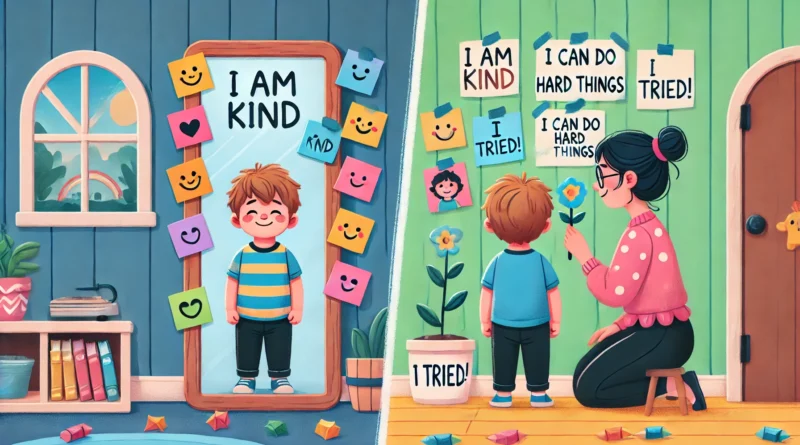How to Teach Young Children About Confidence and Believing in Themselves
Confidence is the foundation of a child’s ability to learn, try new things, and bounce back from mistakes. When children believe in themselves, they’re more willing to take on challenges, express their ideas, and feel proud of their efforts. Teaching self-confidence doesn’t mean making kids think they’re perfect—it means helping them trust their abilities, even when things get tough.
Why Teaching Confidence Matters
- Builds emotional strength and resilience
- Supports learning and risk-taking
- Encourages independence and self-expression
- Promotes positive self-talk
- Improves social interaction and problem-solving
Option 1: Use Affirmations and Positive Self-Talk
Activity Idea:
Create a mirror routine where your child looks at themselves and says kind phrases like:
- “I am kind.”
- “I can do hard things.”
- “I am proud of myself.”
Write the affirmations on colorful sticky notes and place them on a wall or mirror.
What Kids Learn:
- How words shape self-belief
- Daily practice of kindness toward themselves
- Comfort in speaking up
Tool Suggestion:
Make a “Confidence Jar” filled with uplifting phrases that your child can pull each morning.
Option 2: Celebrate Effort Over Perfection
Activity Idea:
Praise your child for trying, even when things don’t go perfectly.
Use phrases like: “I saw how hard you worked!” or “You didn’t give up, and that’s amazing.”
Create an “I Tried!” board where your child can share drawings or photos of things they worked hard on.
What Kids Learn:
- That effort matters more than outcomes
- It’s okay to make mistakes
- Pride in growth, not just results
Book Suggestion:
The Magical Yet by Angela DiTerlizzi — encourages kids to try, even when things are difficult.
Additional Ideas to Reinforce Confidence
- Let your child make choices: “Do you want the red shirt or the blue one?”
- Give responsibilities: Allow your child to help with cooking, tidying, or setting the table.
- Model confidence: Show them how you face your own fears: “I was nervous, but I tried anyway.”
- Create a “Wow Wall”: Display artwork, kind notes, or anything that reminds your child of their strengths.
Final Thoughts
Helping young children build confidence is one of the most valuable gifts you can give. With consistent encouragement, affirmations, and the celebration of effort, children learn to trust themselves, try new things, and feel good about who they are. Confidence is not about being the best—it’s about believing you can grow, learn, and shine in your own unique way.
